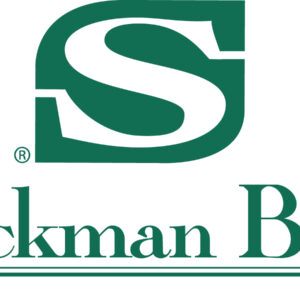Commercial
Larson Family Properties LLC / Leaf Pediatrics, 985 Peachtree Rd, Com Remodel – Change In Use, $15,000
McDonalds Real Estate Company|Langlas & Assoc. Inc, 525 Wicks Ln, Com Remodel, $75,000
Beacon Air Group |Monarch Limited Of Montana, 2523 Altimeter Dr, Com New Warehouse/Storage , $800,000
Edie Best |Jones Construction Inc, 25 N 17th St, Billings Animal Family Clinic, Com New Office/Bank, $1,909,325
School District #2|Earth Movers Excavation Inc, 1812 19th St W, Com Remodel, $45,000
Natalie Hilderman |Bullseye Electric Llc, 504 Bernard St, Com Remodel – Change In Use, $1,500
Homefront |TW Ridley Llc, 1024 St Johns Ave, Com Remodel, $35,400
Homefront |TW Ridley Llc 1028 St Johns Ave, Com Remodel, $35,400
Homefront |TW Ridley Llc, 1029 St Johns Ave, Com Remodel, $35,400
Homefront |TW Ridley Llc, 1030 St Johns Ave, Com Remodel, $35,400
Homefront |TW Ridley Llc, 1026 St Johns Ave, Com Remodel, $35,400
Billings Clinic|Swanke Construction Bc Pet Ct, 801 N 29th St, Com Remodel, $75,000
State Of Mt Department Of Admistration|Bradford Roof Management Inc/ 701 S 27th St, Com Fence/Roof/Siding $270,850 R
Marks Janet & Marcel Rev Livi|T.O. Jones Construction Inc., 2204 Alderson Ave, Com Fence/Roof/Siding, $15,600
Family Beginnings LLC|Montana Freestone Construction LLC, 134 Grand Ave, Com Remodel – Change In Use, $35,000
Brandish Properties LLC|Valentine Remodeling, 304 Grand Ave, Com Remodel, $25,000
Homefront |Wovek Inc, 925 S 31st St, Com Remodel, $46,000
Homefront |Wovek Inc , 3007 9th Ave S, Com Remodel, $76,666
School District #2|Bauer Construction , 2201 St Johns Ave, Com Remodel, $500
Cta Building Llp|Centimark Corp, 13 N 23rd St, Com Fence/Roof/Siding, $186,764
Rimrock Mall |Neumann Construction, 300 S 24th St W, Com Remodel, $50,000
Sasi Investments Llc|Sawtooth Contracting Inc , 2001 Rosebud Dr, Com Remodel – Change In Use, $5,000
Michelle Trudell |Bauer Construction , 2240 Grant Rd, Suite 1, Com Remodel, $200,000
Mayflower Congregational Churc|Wegner Homes , 2940 Poly Dr, Com Remodel, $113,850
Costco Wholesale|Lydig Construction Inc , 2290 King Ave W, Com Remodel, $197,000
First Congregational Church Of|Integrity Building And Development, 310 N 27th S, Com Remodel, $9,500
Jason Marble, 3485 A J Way, Marble Coffee Roaster, Com Remodel – Change In Use, $250
Amerco Real Estate Company|Commercial Roofing Montana LLC, 1515 Grand Ave, Com Fence/Roof/Siding, $586,360 r
Mike D Dimich Sons|Lennick Bros. Roofing & Sheetmetal, 344 Howard Ave, Com Fence/Roof/Siding, $8,000 r
Am Cbre 1st South Llc|Lennick Bros. Roofing & Sheetmetal, 3004 1st Ave S, Com Fence/Roof/Siding, $7,000 r
St Lukes Episcopal Church|Absolute Construction, 119 N 33rd St, Com Remodel, $30,000
Brock Williams |Dimension Edge Inc Dba Big Sky Solarwind 1500 Poly Dr, Com Addition, $250,000
Beacon Air Group |Monarch Limited Of Montana , 2533 Altimeter Dr, Com New Warehouse/Storage, $800,000
School District 2|Bauer Construction , 425 Grand Ave, Com Remodel, $85,000
Fischer Technologies |Dynamic Construction Solutions LLC , 2404 6th Ave N, Com Remodel, $10,000
Brad Barker , 208 N 29th St, Com Remodel $7,500
School District #2|Empire Roofing Inc, 3723 Central Ave, Com Fence/Roof/Siding, $127,869 R
Yellowstone County|Hardy Construction Co, 2825 3rd Ave N, Com Remodel, $15,000
Single Family
Concepcion Construction|Concepcion Construction Llc, 131 Morocco Dr, Res New Single Family, $350,000
4 Mt Homes Inc |4 Mt Homes Inc, 996 Matador Ave, Res New Single Family, $303,397
Infinity Home LLC |Infinity Home LLC, 879 El Rancho Dr, Res New Single Family, $242,671
Infinity Home LLC |Infinity Home LLC, 2212 Modera Ave, Res New Single Family, $196,546
4 Mt Homes Inc |4 Mt Homes Inc, 2271 Lindero Blvd, Res New Single Family, $206,904
Hanser Capital Holdings Llc|Great States Construction, 4411 Dacha Dr, Res New Townhome, $850,000
South Pine Design |South Pine Design, 5326 N Iron Mountain Rd, Res New Single Family, $500,000
Rimrock Builders Inc|Rimrock Builders Inc, 1905 E Thunder Mountain Rd, Res New Single Family, $600,000
WL Zimmerman LLC|Lees Construction & Development LLC, 3635 Spring Wheat Ln, Res New Townhome, $1,250,000
WL Zimmerman LLC|Lees Construction & Development LLC , 1925 Charlotte Dr, Res New Townhome, $1,025,000
WL Zimmerman LLC|Lees Construction & Development LLC, 3632 Avenue E, Amber Apartment Homes – 4-Plex New Construction Of (13) 4-Ple Res New Townhome $900,000
WL Zimmerman LLC|Lees Construction & Development LLC, 2024 Charlotte Dr, Res New Townhome, $900,000
WL Zimmerman LLC|Lees Construction & Development LLC, 2022 Charlotte Dr, Res New Townhome, $900,000
WL Zimmerman LLC|Lees Construction & Development LLC, 2005 Charlotte Dr, Res New Townhome, $900,000
WL Zimmerman LLC|Lees Construction & Development LLC, 2007 Charlotte Dr, Res New Townhome, $900,000
WL Zimmerman LLC|Lees Construction & Development LLC, 2012 Charlotte Dr, Res New Townhome, $900,000
WL Zimmerman LLC|Lees Construction & Development LLC, 2014 Charlotte Dr, Res New Townhome, $900,000
WL Zimmerman LLC|Lees Construction & Development LLC, 2015 Charlotte Dr, Res New Townhome, $900,000
WL Zimmerman LLC|Lees Construction & Development LLC, 2017 Charlotte Dr, Development LLC, Res New Townhome, $900,000
WL Zimmerman LLC|Lees Construction & Development LLC, 2025 Charlotte Dr, Res New Townhome, $900,000
WL Zimmerman LLC|Lees Construction & Development LLC 2027 Charlotte Dr, Res New Townhome, $900,000
WL Zimmerman LLC|Lees Construction & Development LLC, 3636 Harvest Time Ln, Res New Townhome, $900,000
WL Zimmerman LLC|Lees Construction & Development LLC, 3638 Harvest Time Ln, Res New Townhome, $900,000
Steve Gountanis Homes Inc |Steve Gountanis Homes Inc, 5345 Riesling Ln, Res New Single Family, $650,000
Hill Ron S Living Trust|Diverse Construction LLC, 2160 Greenbriar Rd, Res New Single Family, $294,590
McDonald Brian|Jorden Construction , 4610 Loma Vista Dr, Res New Single Family, $1,180,000
Mike Christensen |Michael Christensen Homes, 4704 Ravenwood Dr, Res New Two Family, $396,632
Montana Endeavors LLC, 2742 Palm Dr, Res New Single Family, $750,000
Habitat For Humanity Mid Yell|Habitat For Humanity, 1527 Ping Circle, Res New Single Family, $350,000
Christoferson David & Rebecca|Ketchum Construction & Woodworks Inc, 1951 Black Fig Ct, Res New Single Family, $980,000
Infinity Home LLC |Infinity Home LLC, 2224 Modera Ave, Res New Single Family, $211,636
Billings Best Builders |Billings Best Builders LLC, 5239 Amherst Dr, Res New Single Family, $250,000

